Bending
Transverse loads applied to a horizontal straight beam will cause it to deflect primarily up or down. This type of deformation is referred to as bending. A beam in bending will develop normal (tensile and compressive) bending stresses throughout the beam. The magnitude of these stresses depends on the internal bending moment in the beam as well as the beam's cross-section geometry.Sign Conventions for Shear and Moment Diagrams
For the purposes of drawing shear and moment diagrams, the adopted sign conventions for internal forces and moments are shown below. The internal shear force \( V \) and moment \( M \) in a beam are plotted with positive values when they act in the indicated directions with respect to internal surfaces in the beam. These conventions assume the analysis is conducted on a horizontal beam with positive \( x \) axis pointing to the right.


Boundary Conditions
Below are common support conditions and loading conditions that are used to model beams.
Pin supports allow rotation but not translation; fixed supports restrain both translation and rotation of the beam at that location.
Statically Determinate Beams


Pure Bending
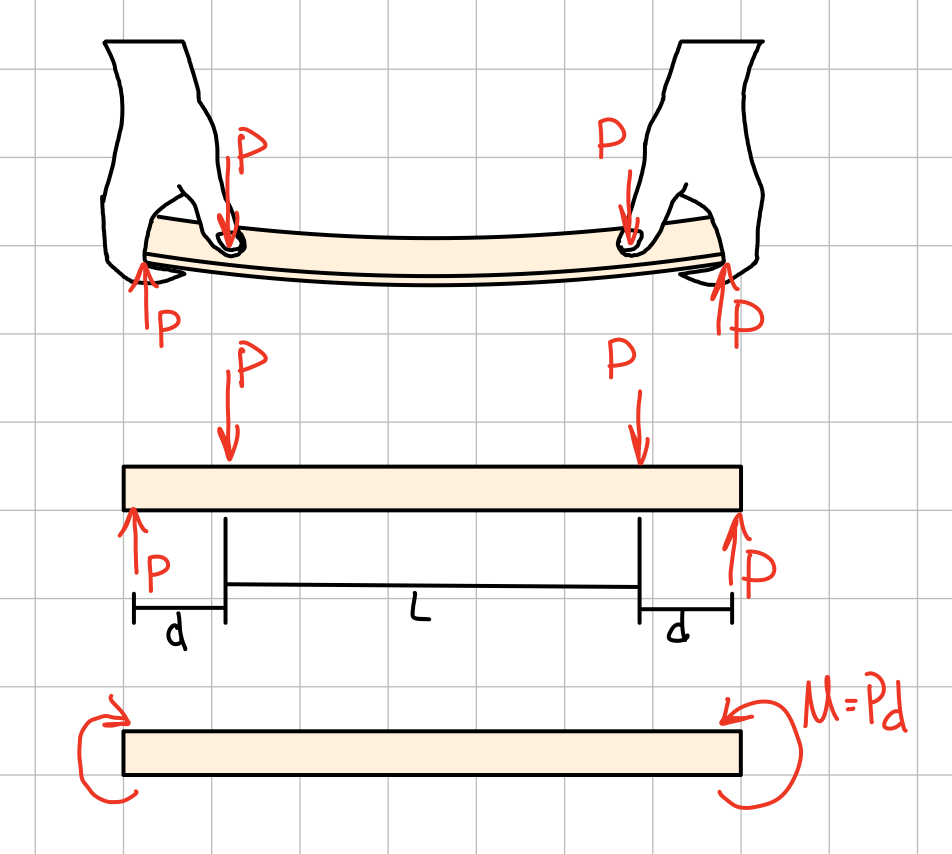
Geometry of Deformation

-
Plane sections remain plane \( \rightarrow \)no shear stress/strains.
Therefore:Also, traction free boundary conditions yields...
-
There is a Neutral axis between the top and the bottom where the length does not change.
-
The beam deforms into a circular arc where the top surface (\( AB \)) is in compression , and the bottom surface (\( AB ^\prime \)) is in tension.
- Any point in the beam is in a state of uniaxial normal stress.
- Finding stresses is a statically indeterminate problem.
Stress-Strain Variations
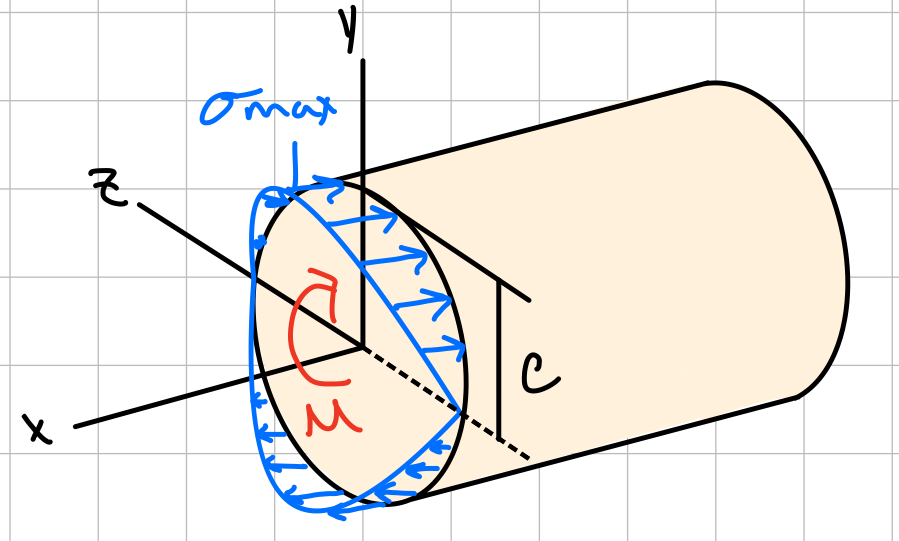
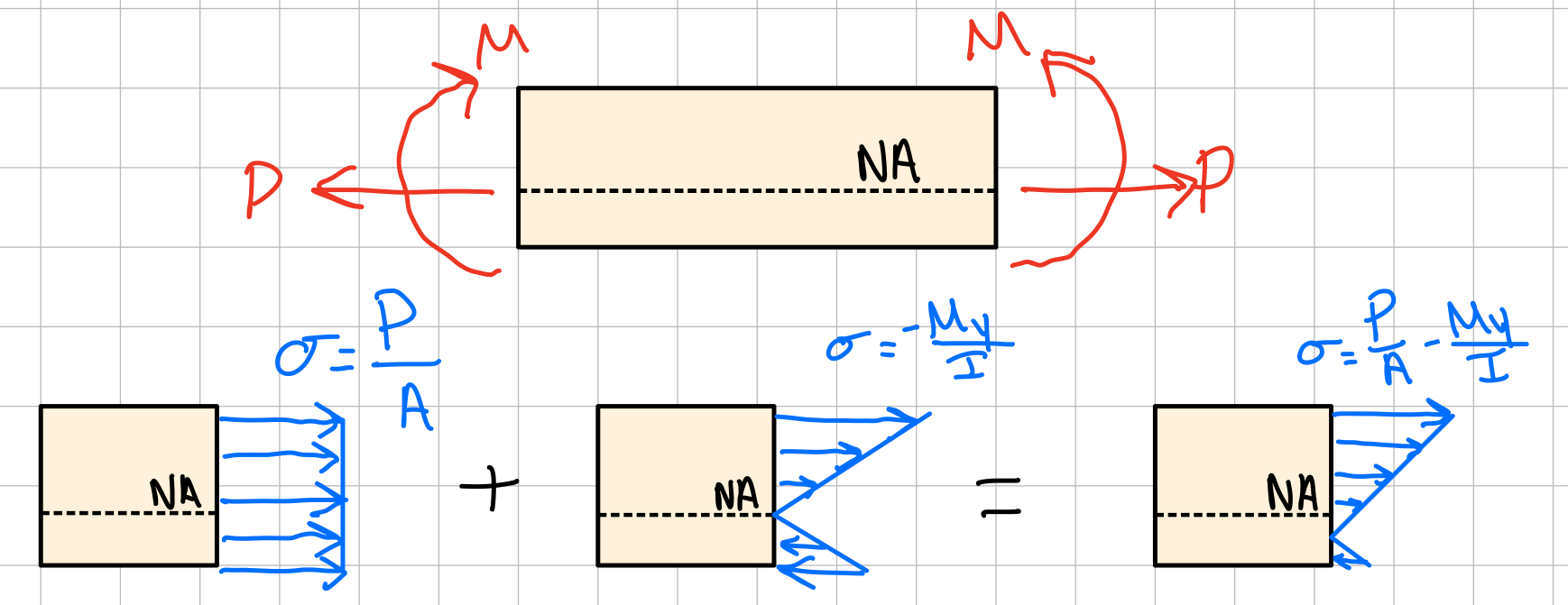
Material Behavior: linear elastic beams
Elastic range: bending moment is such that the normal stresses remain below the yield strength.First Moment of Area: Centroid of an Area
The first moment of the area A with respect to the z-axis is given by \( Q_x = \int_A y dA = \Sigma yA \) . The first moment of the area A with respect to the y-axis is given by \( Q_y = \int_A x dA = \Sigma zA \). \( (\overline{x}, \overline{y}) \)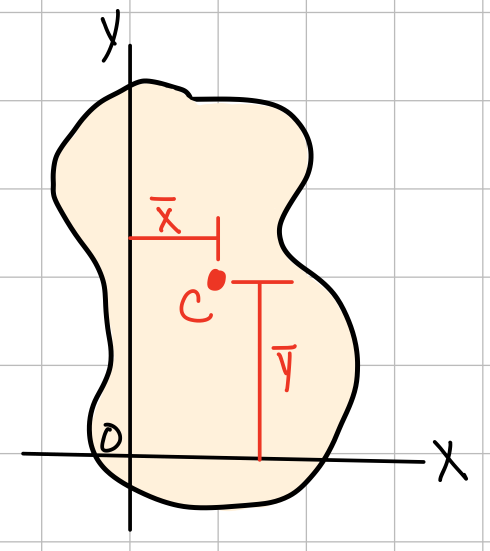
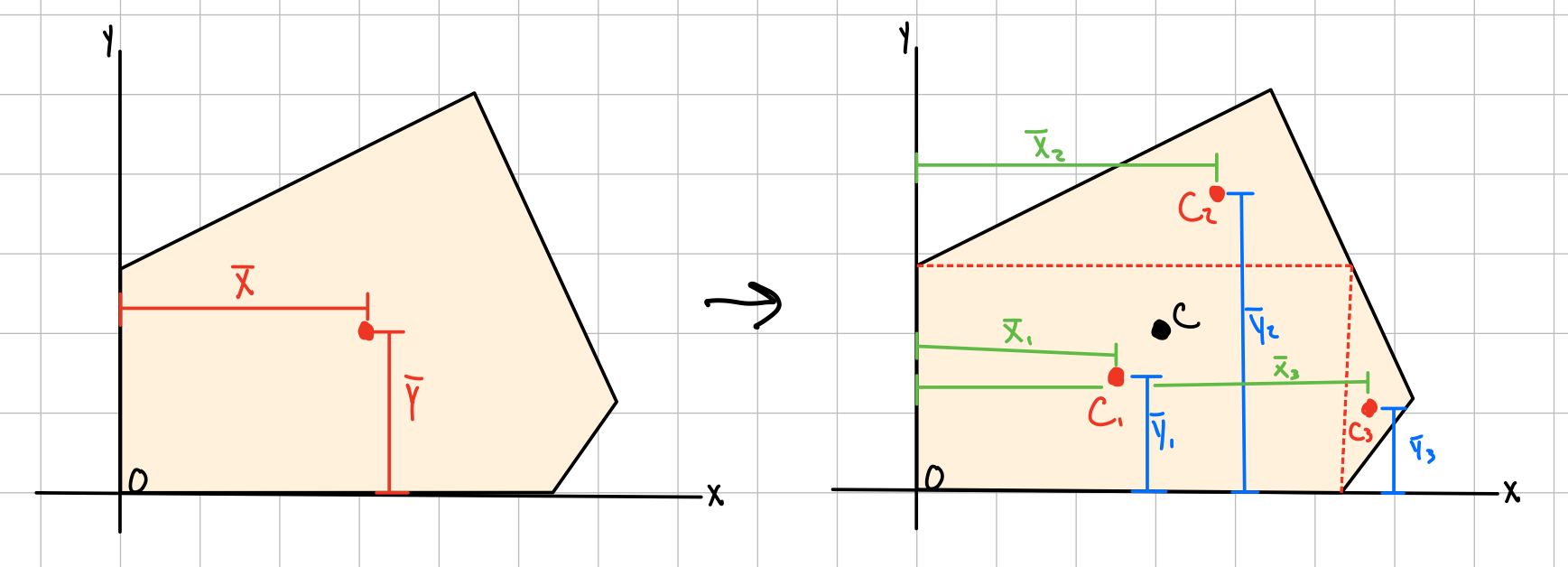
Second Moment or Area Moment of Inertia
The moment of inertia of the area \( A \) with respect to the x-axis.Note: polar moment of inertia in this plane
Summary: Moment of Inertia
| Shape | Diagram | Equations |
|---|---|---|
| Rectangle | 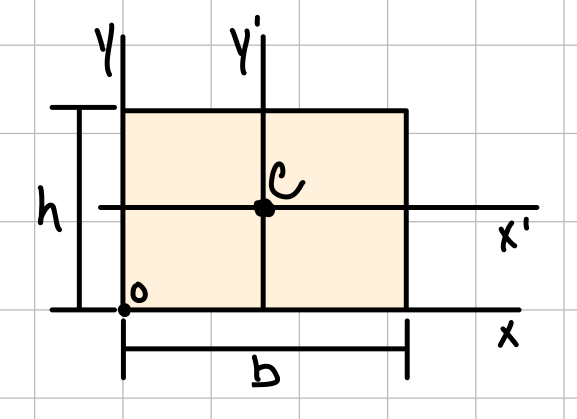 | \( \bar{I_{x'}} = \frac{1}{12}b h^3 \) \( \bar{I_{y'}} = \frac{1}{12}b^3 h \) \( I_x = \frac{1}{3}b h^3 \) \( I_y = \frac{1}{3}b^3 h \) \( J_c = \frac{1}{12}bh(b^2+h^2) \) |
| Triangle | 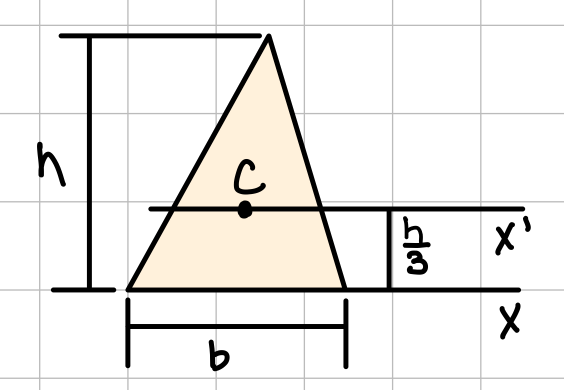 | \( \bar{I_{x'}} = \frac{1}{36}bh^3 \) \( I_x = \frac{1}{12}bh^3 \) |
| Circle | 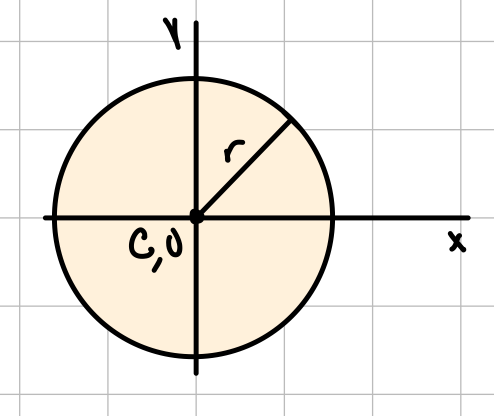 | \( \bar{I_x} = \bar{I_y} = \frac{1}{4} \pi r^4 \) \( J_O= \frac{1}{2} \pi r^4 \) |
| Semicircle | 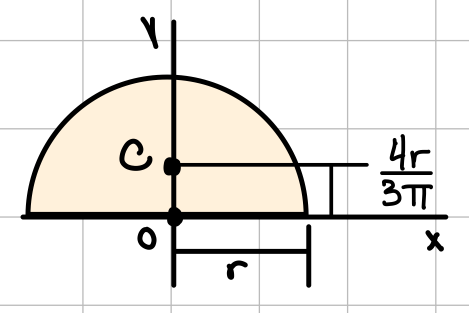 | \( I_x = I_y = \frac{1}{8} \pi r^4 \) \( J_O = \frac{1}{4} \pi r^4 \) |
| Quarter circle | 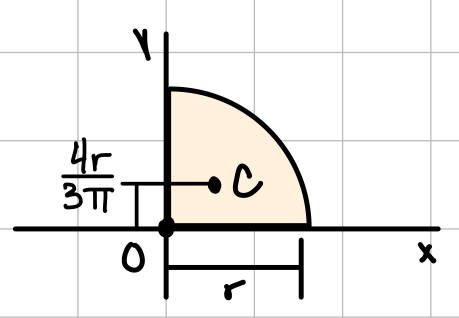 | \( I_x = I_y = \frac{1}{16} \pi r^4 \) \( J_O = \frac{1}{8} \pi r^4 \) |
| Ellipse | 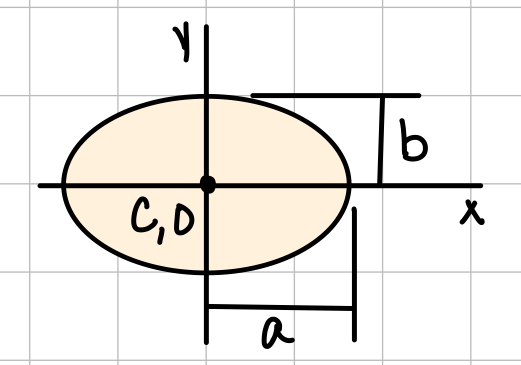 | \( \bar{I_x} = \frac{1}{4} \pi a b^3 \) \( \bar{I_y} = \frac{1}{4} \pi a^3 b \) \( J_O = \frac{1}{4} \pi ab(a^2+b^2) \) |
| Mass moment of inertia | Area moment of inertia | |||
|---|---|---|---|---|
| Other names | First moment of area | Second moment of area | Polar moment of area | |
| Description | Determines the torque needed to produce a desired angular rotation about an axis of rotation (resistance to rotation) | Determines the centroid of an area | Determines the moment needed to produce a desired curvature about an axis(resistance to bending) | Determines the torque needed to produce a desired twist a shaft or beam(resistance to torsion) |
| Equations | ||||
| Units | \( mass*length^2 \) | \( length^3 \) | \( length^4 \) | \( length^4 \) |
| Typical Equations | ||||
| Courses | TAM 212 | TAM 251 | TAM 210, TAM 251 | TAM 251 |
Maximum Normal Stress
From equilibrium: the centroid is located at \( \bar{y}=0 \), i.e., the neutral axis passes through the centroid of the section.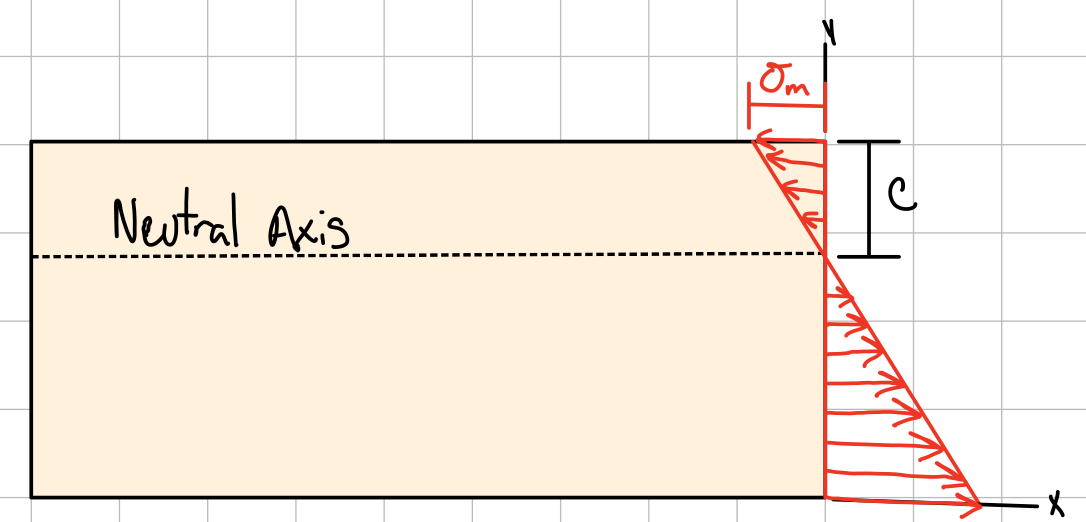
Heads up! - Extra
Composite beams builds on this content.
Recall that \( \epsilon_x = -\frac{y}{\rho} \) does not depend on the material properties of the beam, and is based only on the assumptions of geometry done so far.
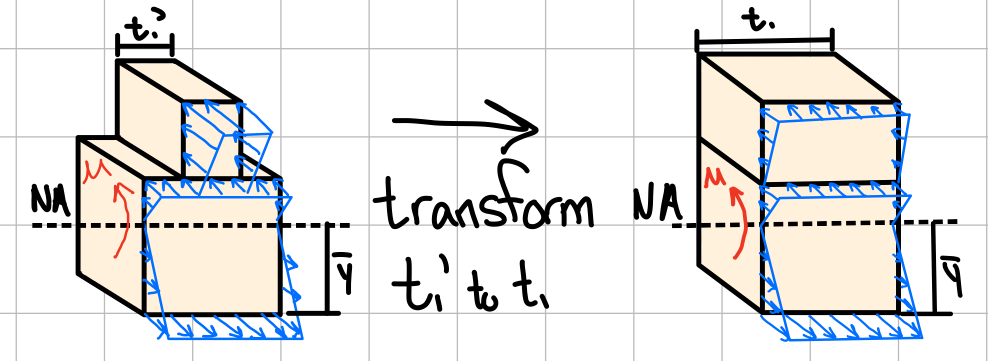
After obtaining the TRANSFORMED CROSS SECTION, we get
Note: the widening (\( n > 1 \)) or narrowing (\( n < 1 \)) must be done in a direction parallel to the neutral axis of the section, since we want y-distances to be the same in the original and transformed section, so that the distance y in the flexural formula is unaltered.
Eccentric Axial Loading in a Plane of Symmetry
